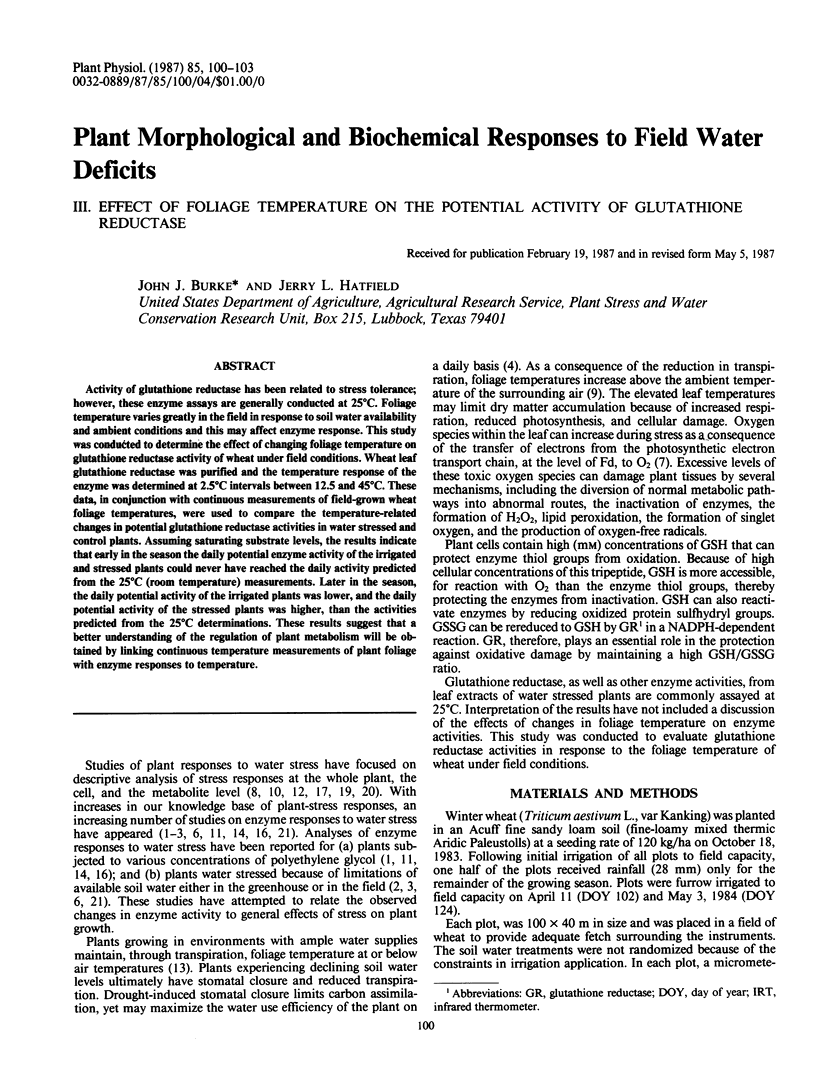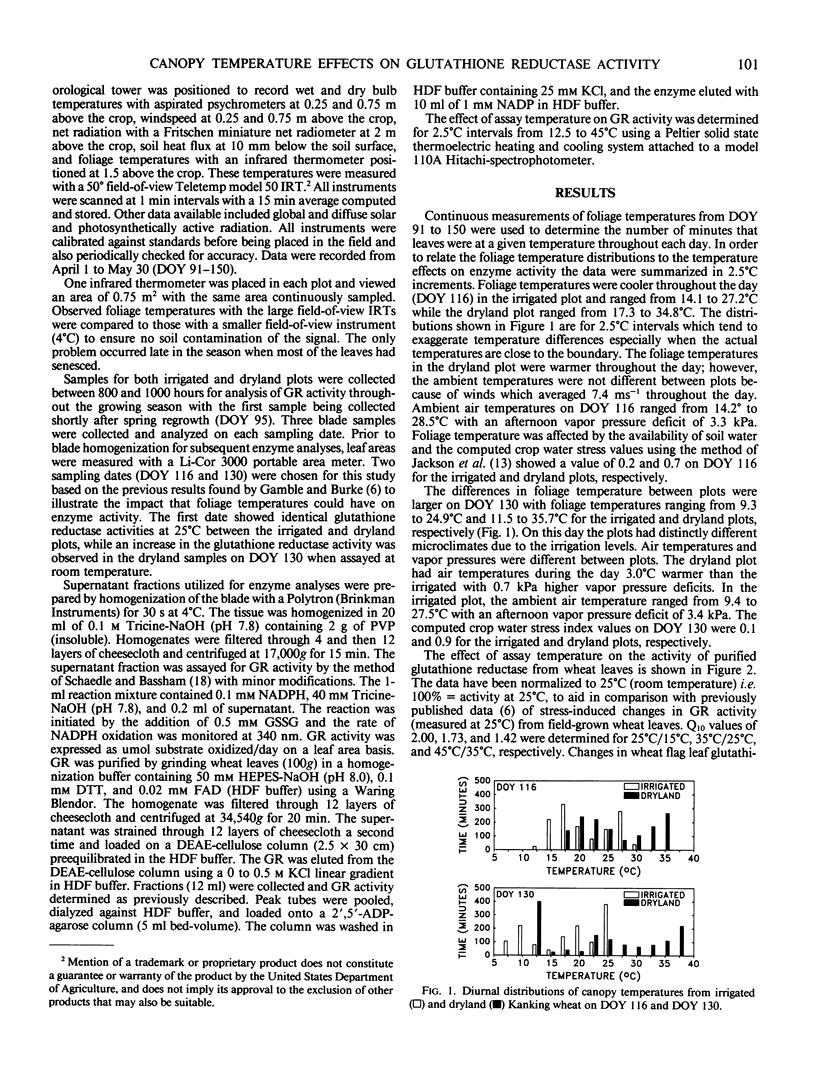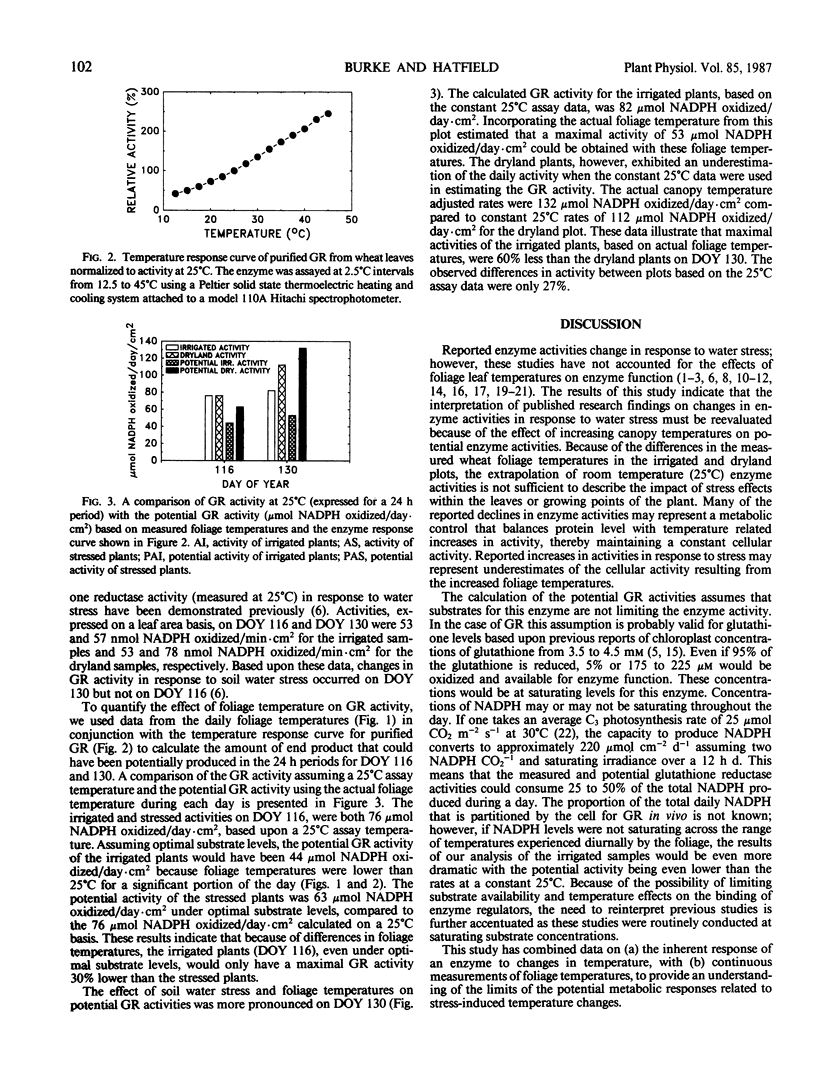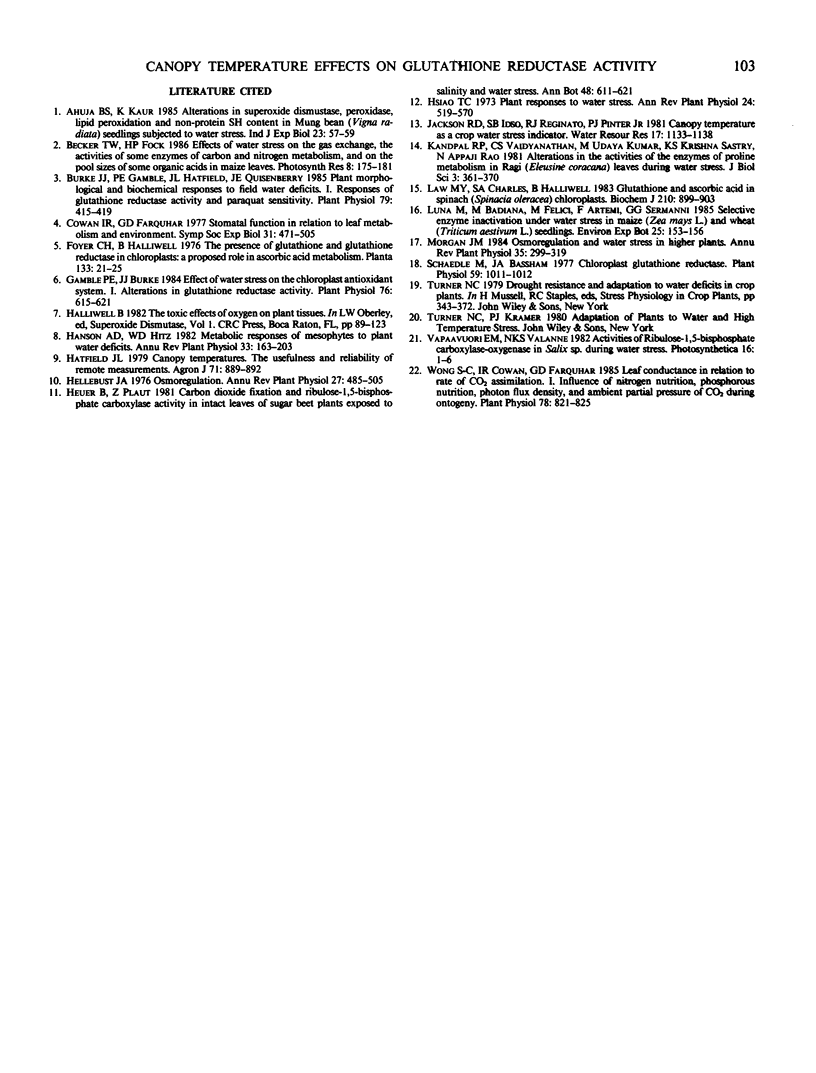Abstract
Activity of glutathione reductase has been related to stress tolerance; however, these enzyme assays are generally conducted at 25°C. Foliage temperature varies greatly in the field in response to soil water availability and ambient conditions and this may affect enzyme response. This study was conducted to determine the effect of changing foliage temperature on glutathione reductase activity of wheat under field conditions. Wheat leaf glutathione reductase was purified and the temperature response of the enzyme was determined at 2.5°C intervals between 12.5 and 45°C. These data, in conjunction with continuous measurements of field-grown wheat foliage temperatures, were used to compare the temperature-related changes in potential glutathione reductase activities in water stressed and control plants. Assuming saturating substrate levels, the results indicate that early in the season the daily potential enzyme activity of the irrigated and stressed plants could never have reached the daily activity predicted from the 25°C (room temperature) measurements. Later in the season, the daily potential activity of the irrigated plants was lower, and the daily potential activity of the stressed plants was higher, than the activities predicted from the 25°C determinations. These results suggest that a better understanding of the regulation of plant metabolism will be obtained by linking continuous temperature measurements of plant foliage with enzyme responses to temperature.
Full text
PDF



Selected References
These references are in PubMed. This may not be the complete list of references from this article.
- Burke J. J., Gamble P. E., Hatfield J. L., Quisenberry J. E. Plant morphological and biochemical responses to field water deficits: I. Responses of glutathione reductase activity and paraquat sensitivity. Plant Physiol. 1985 Oct;79(2):415–419. doi: 10.1104/pp.79.2.415. [DOI] [PMC free article] [PubMed] [Google Scholar]
- Cowan I. R., Farquhar G. D. Stomatal function in relation to leaf metabolism and environment. Symp Soc Exp Biol. 1977;31:471–505. [PubMed] [Google Scholar]
- Gamble P. E., Burke J. J. Effect of water stress on the chloroplast antioxidant system: I. Alterations in glutathione reductase activity. Plant Physiol. 1984 Nov;76(3):615–621. doi: 10.1104/pp.76.3.615. [DOI] [PMC free article] [PubMed] [Google Scholar]
- Law M. Y., Charles S. A., Halliwell B. Glutathione and ascorbic acid in spinach (Spinacia oleracea) chloroplasts. The effect of hydrogen peroxide and of Paraquat. Biochem J. 1983 Mar 15;210(3):899–903. doi: 10.1042/bj2100899. [DOI] [PMC free article] [PubMed] [Google Scholar]
- Schaedle M. Chloroplast glutathione reductase. Plant Physiol. 1977 May;59(5):1011–1012. doi: 10.1104/pp.59.5.1011. [DOI] [PMC free article] [PubMed] [Google Scholar]
- Wong S. C., Cowan I. R., Farquhar G. D. Leaf Conductance in Relation to Rate of CO(2) Assimilation: I. Influence of Nitrogen Nutrition, Phosphorus Nutrition, Photon Flux Density, and Ambient Partial Pressure of CO(2) during Ontogeny. Plant Physiol. 1985 Aug;78(4):821–825. doi: 10.1104/pp.78.4.821. [DOI] [PMC free article] [PubMed] [Google Scholar]


